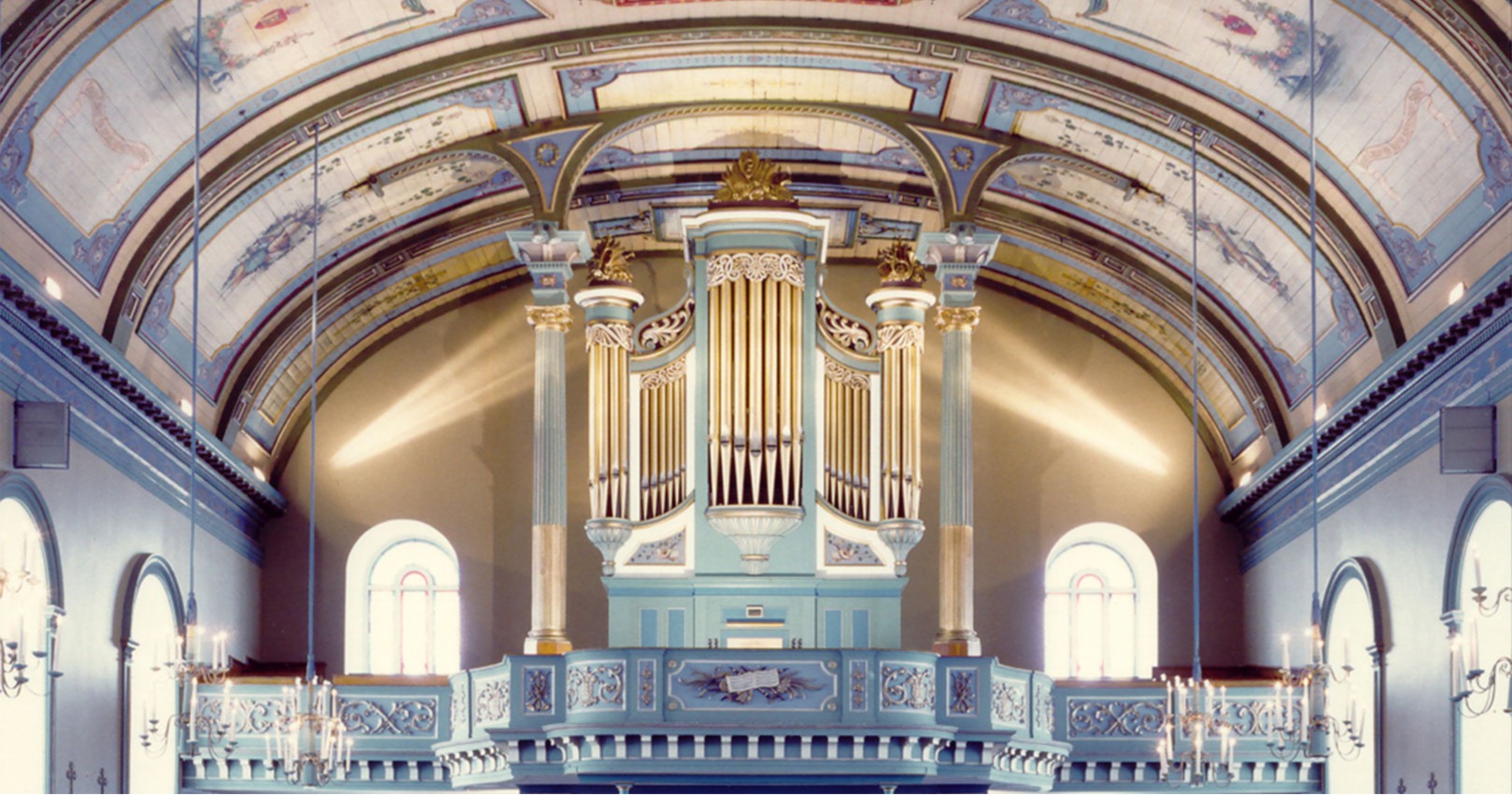

Boucherville, QC

Founded in 1667, the picturesque town of Boucherville is located on the south shore of the St. Lawrence River, just outside the city of Montréal.
The present stone church was consecrated in 1802. Tragically, a terrible fire in 1843 destroyed most of the buildings of the old village and gutted the church. Fortunately, the thick stone walls withstood the devastation of the fire, and plans soon were under way to rebuild the church inside the venerable walls. Quebec’s famed architect Louis-Thomas Berlinguet was commissioned for the project. As part of his obligations, Berlinguet designed the current organ casework, which is today among the best extant examples of its kind in Quebec. The church was designated a historic monument in 1964.
Samuel Warren installed a new organ in 1847 inside the then new Berlinguet case. Sadly, this instrument was revisited many times over the years, including replacing the original mechanical action and attached keydesk with electric action and a detached console. The rather unreliable instrument we found was literally an assemblage of parts of various sources and value. The only original parts remaining of the Warren organ included the case, a reservoir and two ranks of pipes. These two stops, a Bourdon 8’ and a Flute 4’, were restored and integrated into our new organ, together with an Oboe 8’ dating from the time of the Casavant brothers that had been added at some point.
The new organ is installed inside the magnificent Berlinguet case, which we restored and moved to its original position in the gallery, thus reinstating the organ’s presence in the room, both architecturally and acoustically. Because of the somewhat fragile nature of the woodwork, the new organ is structurally independent of the old case.
The new mechanical keydesk is attached to the casework. The internal layout of the divisions and pipewood recalls the common practice of most builders of the period, with the Récit behind and raised above the Grand Orgue and Pédale.
Tonally, the organ is capable of playing an important role in both liturgy and concert settings. The influence of French aesthetics is clearly discernible, and the specification discloses the presence of classic and romantic elements, including a large Récit division of ten stops with Viole de Gambe and Voix Céleste, and reeds at 16’ and 8’ pitches. The variety of flute stops and reeds built according to principles laid out by great French organ builders finds presence and harmony in this instrument. A very efficient expression enclosure, rich principals and generous flues have the added advantage of sounding in an exceptional acoustical environment, thus combining into a truly successful marriage of instrument and space.